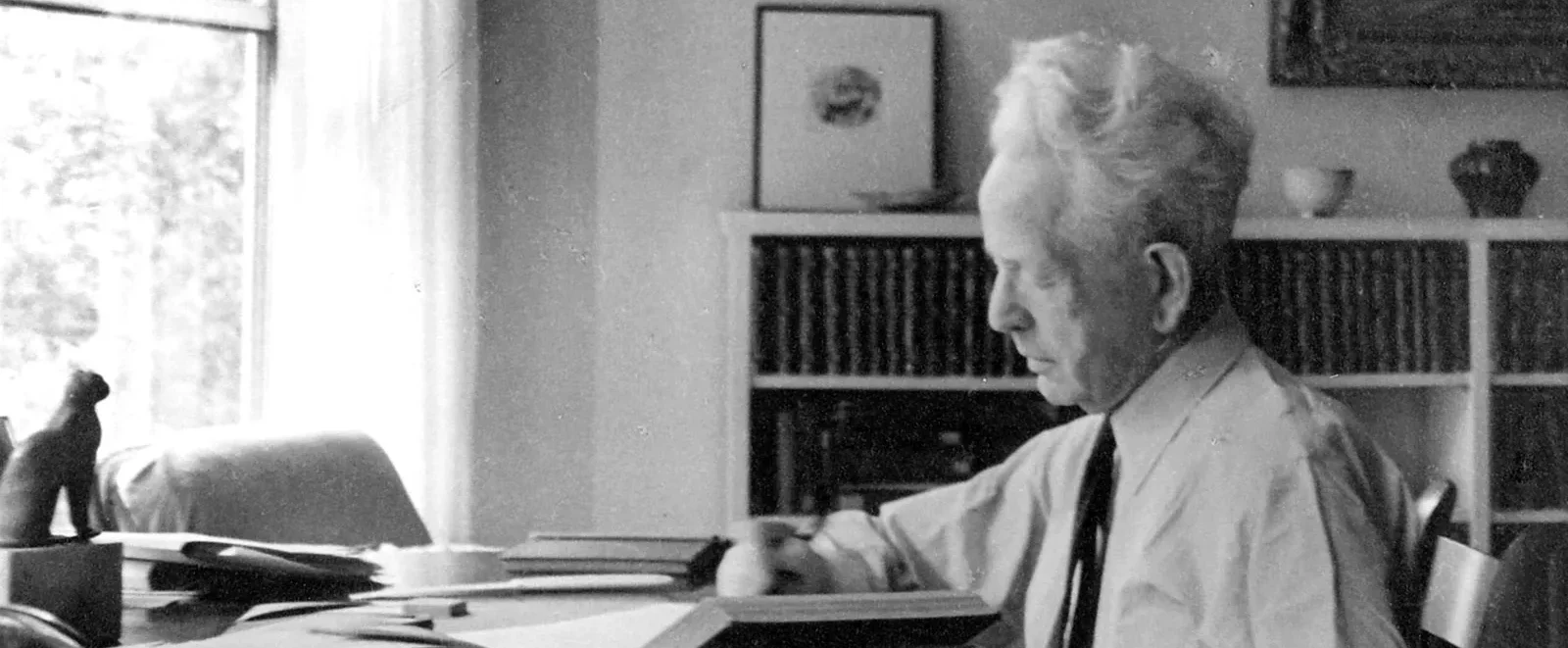Who was Ernst Cassirer?

Ernst Cassirer (1874-1945) was a German-Jewish philosopher who made significant contributions to the fields of epistemology, philosophy of science, intellectual history, and cultural theory. His work on symbolic forms and his neo-Kantian approach to understanding human culture and cognition have had a lasting impact on various disciplines, including philosophy, anthropology, linguistics, and cognitive science. Cassirer’s theories have influenced subsequent thinkers and continue to be relevant in contemporary discussions about human knowledge, culture, and the nature of reality.
In this comprehensive essay, we will explore Cassirer’s key theoretical contributions, his philosophy of symbolic forms, and the enduring relevance of his ideas in contemporary philosophy and cultural studies. We will examine how Cassirer’s work has shaped our understanding of human cognition, cultural development, and the role of symbols in human experience.
Cassirer’s Philosophy of Symbolic Forms
2.1. The Concept of Symbolic Forms
At the heart of Cassirer’s philosophical framework is the concept of symbolic forms. In his seminal work “Philosophy of Symbolic Forms” (1923-1929), Cassirer argued that human understanding and experience of the world are mediated through various symbolic systems. These symbolic forms include language, myth, religion, art, science, and history. Each of these forms, according to Cassirer, represents a unique way of structuring and interpreting reality.
Cassirer’s theory of symbolic forms challenged the traditional view of human cognition as a passive reception of sense data. Instead, he proposed that human beings actively construct their reality through symbolic activity. This idea laid the groundwork for modern understandings of the role of culture and symbols in shaping human perception and thought.
2.2. The Evolution of Symbolic Thought
Cassirer developed a developmental model of human cognition and culture, tracing the evolution of symbolic thought from mythical thinking to scientific reasoning. He argued that different symbolic forms represent stages in the cultural and cognitive development of humanity, with each form building upon and transforming the previous ones.
According to Cassirer, mythical thinking represents an early stage of symbolic activity, characterized by a holistic and emotive approach to reality. As human culture evolved, more abstract and differentiated forms of symbolization emerged, culminating in scientific thought, which Cassirer saw as the most refined and objective form of symbolic activity.
2.3. The Unity of Human Culture
Despite the diversity of symbolic forms, Cassirer maintained that there is an underlying unity to human culture. He argued that all symbolic forms share a common function: to organize and give meaning to human experience. This perspective allowed Cassirer to develop a comprehensive theory of culture that emphasized both the diversity and the fundamental unity of human symbolic activities.
Cassirer’s Epistemology and Philosophy of Science
3.1. Neo-Kantian Foundations
Cassirer’s philosophical approach was deeply influenced by neo-Kantianism, particularly the Marburg School. Like Kant, Cassirer was concerned with the conditions of possibility for human knowledge. However, he expanded Kant’s transcendental method to encompass the full range of human cultural activities.
Cassirer argued that the a priori forms of intuition and categories of understanding proposed by Kant should be understood as culturally and historically variable symbolic forms. This approach allowed him to reconcile Kantian epistemology with the recognition of cultural diversity and historical change.
3.2. The Philosophy of Science
Cassirer made significant contributions to the philosophy of science, particularly in his work “Substance and Function” (1910). He challenged the traditional substance-based ontology and proposed a functional approach to scientific concepts. Cassirer argued that scientific concepts should be understood not as representations of fixed entities but as functional relations within a system of knowledge.
This functional approach to scientific concepts anticipated many developments in 20th-century philosophy of science and continues to influence discussions about the nature of scientific knowledge and explanation.
3.3. The Concept of Symbolic Pregnance
Cassirer introduced the concept of “symbolic pregnance” to describe the way in which perception is always already imbued with meaning. He argued that even our most basic sensory experiences are shaped by symbolic forms, challenging the idea of a clear distinction between perception and conception.
This insight has had a lasting impact on theories of perception and cognition, influencing fields such as cognitive psychology and embodied cognition.
Cassirer’s Cultural Theory and Political Philosophy
4.1. The State as a Symbolic Form
Cassirer extended his analysis of symbolic forms to political and social theory. In his work “The Myth of the State” (1946), he examined the role of mythical thinking in modern political ideologies, particularly totalitarianism. Cassirer argued that the state itself should be understood as a symbolic form, emphasizing the importance of political myths and symbols in shaping social reality.
His analysis of the mythical elements in modern political thought provided valuable insights into the nature of totalitarian ideologies and continues to inform discussions about political symbolism and propaganda.
4.2. Humanism and the Critique of Totalitarianism
Cassirer was a committed humanist who saw his philosophy as a defense of human freedom and dignity against the forces of irrationalism and totalitarianism. He argued that the recognition of the diversity of symbolic forms could serve as a bulwark against dogmatism and intolerance.
In his later works, written in exile from Nazi Germany, Cassirer developed a philosophical critique of totalitarianism that emphasized the importance of pluralism and the open-ended nature of human cultural development.
4.3. The Concept of Animal Symbolicum
Cassirer famously defined humans as animal symbolicum (the symbolic animal), emphasizing that the capacity for symbolic thought is the defining characteristic of human beings. This concept has had a lasting influence on anthropological and philosophical discussions of human nature and culture.
The Relevance of Cassirer’s Work in Contemporary Philosophy and Cultural Studies
5.1. Influence on Semiotics and Cultural Studies
Cassirer’s work on symbolic forms has been influential in the development of semiotics and cultural studies. His emphasis on the role of symbols in mediating human experience anticipates many of the key insights of structuralism and post-structuralism.
Contemporary approaches to cultural analysis often draw, explicitly or implicitly, on Cassirer’s insights into the symbolic nature of human culture and the interrelation between different symbolic systems.
5.2. Contributions to Cognitive Science and Philosophy of Mind
Cassirer’s theories about the role of symbolic forms in human cognition have found new relevance in contemporary cognitive science and philosophy of mind. His emphasis on the active, constructive nature of human cognition aligns with modern embodied and enactive approaches to mind and consciousness.
Recent work in cognitive linguistics and conceptual metaphor theory can be seen as developing and extending Cassirer’s insights into the symbolic basis of human thought and language.
5.3. Implications for Understanding Cultural Diversity and Intercultural Communication
Cassirer’s recognition of the diversity of symbolic forms, combined with his belief in the underlying unity of human culture, offers a valuable framework for understanding cultural diversity and facilitating intercultural communication. His work continues to inform discussions about cultural relativism, universalism, and the possibilities for cross-cultural understanding.
Legacy
Ernst Cassirer’s contributions to philosophy and cultural theory were profound and far-reaching. His philosophy of symbolic forms provided a comprehensive framework for understanding human culture and cognition, bridging the gap between idealism and empiricism, and between the natural sciences and the humanities.
While Cassirer’s work was somewhat overshadowed in the mid-20th century by existentialism and logical positivism, there has been a resurgence of interest in his ideas in recent decades. As our understanding of human cognition and culture continues to evolve, Cassirer’s theories have found new relevance and support in fields ranging from cognitive science to cultural studies.
The enduring legacy of Ernst Cassirer lies in his emphasis on the symbolic nature of human experience, his recognition of the diversity and unity of human culture, and his defense of humanism and pluralism against dogmatism and totalitarianism. As we continue to grapple with the challenges of understanding human culture and cognition in the 21st century, Cassirer’s work remains an invaluable resource and source of inspiration for philosophers, cultural theorists, and cognitive scientists alike.
Read More Depth Psychology Articles:
Taproot Therapy Collective Podcast
Jungian Innovators
Jungian Topics
How Psychotherapy Lost its Way
Therapy, Mysticism and Spirituality?
The Symbolism of the Bollingen Stone
What Can the Origins of Religion Teach us about Psychology
The Major Influences from Philosophy and Religions on Carl Jung
How to Understand Carl Jung
How to Use Jungian Psychology for Screenwriting and Writing Fiction
The Symbolism of Color in Dreams
How the Shadow Shows up in Dreams
Using Jung to Combat Addiction
Jungian Exercises from Greek Myth
Jungian Shadow Work Meditation
Free Shadow Work Group Exercise
Post Post-Moderninsm and Post Secular Sacred
The Origins and History of Consciousness
Jung’s Empirical Phenomenological Method
The Future of Jungian Thought
Jungian Analysts
Anthropology
Mystics and Gurus
Philosophy
Spirituality
Types of Therapy
Influential Psychologists
Influences on Jung
Classical Literature
Iphigenia in Aulis
Greek Tragedies Influence on Jung
The Psychology of the Peloponesian War
Artists and Designers
Andres Duany
Media
The Psychology of The Sopranos
Poets
Architecture
The Psychology of Architecture
The Psychology of Architecture
The Corporate Post Modern Office
Birmingham Alabama Arts and Culture
African American Writing and Music
Bibliography
- Cassirer, E. (1923-1929). The Philosophy of Symbolic Forms (3 vols.). New Haven: Yale University Press.
- Cassirer, E. (1910). Substance and Function. Chicago: Open Court Publishing Company.
- Cassirer, E. (1946). The Myth of the State. New Haven: Yale University Press.
- Krois, J. M. (1987). Cassirer: Symbolic Forms and History. New Haven: Yale University Press.
- Friedman, M. (2000). A Parting of the Ways: Carnap, Cassirer, and Heidegger. Chicago: Open Court.
- Gordon, P. E. (2010). Continental Divide: Heidegger, Cassirer, Davos. Cambridge, MA: Harvard University Press.
- Verene, D. P. (1979). Symbol, Myth, and Culture: Essays and Lectures of Ernst Cassirer, 1935-1945. New Haven: Yale University Press.
- Lofts, S. G. (2000). Ernst Cassirer: A “Repetition” of Modernity. Albany: State University of New York Press.
- Schilpp, P. A. (Ed.). (1949). The Philosophy of Ernst Cassirer. Evanston, IL: Library of Living Philosophers.
- Skidelsky, E. (2008). Ernst Cassirer: The Last Philosopher of Culture. Princeton: Princeton University Press.
- Hamburg, C. H. (1956). Symbol and Reality: Studies in the Philosophy of Ernst Cassirer. The Hague: Martinus Nijhoff.
- Luft, S. (2015). The Space of Culture: Towards a Neo-Kantian Philosophy of Culture (Cohen, Natorp, and Cassirer). Oxford: Oxford University Press.
- Moynahan, G. B. (2013). Ernst Cassirer and the Critical Science of Germany, 1899–1919. London: Anthem Press.
- Barash, J. A. (2008). The Symbolic Construction of Reality: The Legacy of Ernst Cassirer. Chicago: University of Chicago Press.
- Hoel, A. S., & Folkvord, I. (Eds.). (2012). Ernst Cassirer on Form and Technology: Contemporary Readings. Basingstoke: Palgrave Macmillan.
- Friedman, M., & Luft, S. (Eds.). (2015). The Philosophy of Ernst Cassirer: A Novel Assessment. Berlin: De Gruyter.
- Krois, J. M., Rosengren, M., Steidele, A., & Westerkamp, D. (Eds.). (2011). Embodiment in Cognition and Culture. Amsterdam: John Benjamins Publishing Company.
- Bayer, T. I. (2001). Cassirer’s Metaphysics of Symbolic Forms: A Philosophical Commentary. New Haven: Yale University Press.
- Moss, M. E. (2015). Kant’s Theory of Experience and Reality: A Critical Study of Ernst Cassirer’s Theory of Knowledge. Cham: Springer.
- Recki, B. (2013). Cassirer. Stuttgart: Reclam.


























0 Comments